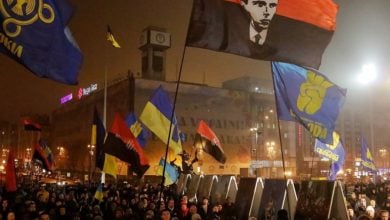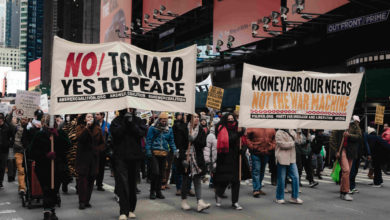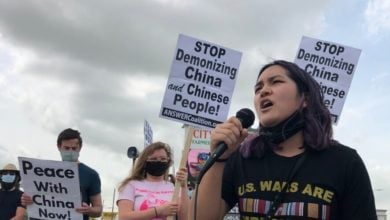Photo: NATO Secretary General Jens Stoltenberg and Ukrainian President Volodymyr Zelensky meeting in June 2019
Ukrainian President Volodymyr Zelensky yesterday called on the NATO military alliance to speed up its membership application process after an uptick in fighting in the breakaway republics of Donetsk and Luhansk on its eastern border. Such a move or any eventual membership of Ukraine in NATO would constitute an escalation of historic proportions and heighten the risk of all-out conflict with Russia.
Last July the ethnically-Russian Donetsk and Luhansk forces and the Ukrainian government agreed to a ceasefire, but in recent weeks that uneasy peace has become increasingly strained.
The push to speed up the application process is a not-so thinly veiled threat to Russia. According to Article 5 of the NATO treaty — the so-called mutual defense clause — an attack on one member nation is an attack on all member nations. But of course what constitutes an attack and what constitutes “defense” is inherently political. In other words, Zelensky could bring the world to the brink of war in its effort to crush the autonomy of these small regions. And NATO forces could be deployed along one of Russia’s largest and most important international borders.
In reality, NATO has always been offensive, not defensive. Created in 1949, the alliance grouped together all the major imperialist powers of the world in anticipation of a third world war with the Soviet Union and its allies. Since the end of the Cold War, NATO has been increasingly repurposed to contain the Russian Federation — now capitalist but still independent of the western powers.
It is also important to remember how the armed conflict erupted in the first place. In 2014 Ukraine suffered a fascist-led coup supported and to a significant extent actually organized by the Obama administration. Extreme anti-Russian sentiment is a core feature of the Ukrainian far right. Given that separatist sentiment took hold in many majority ethnic Russian parts of eastern Ukraine, it led to the union of Crimea with Russia and the declaration of autonomous “People’s Republics” in Donetsk and Luhansk. Some of the actions of the government that took power after the 2014 coup were to vandalize anti-fascist monuments, ban the Communist Party of Ukraine, and also ban the use of officially recognized minority languages including Russian. The new regime counted Hitler-admiring neo-Nazis among its top ranks.
The Biden administration has blamed Russia for “escalations” in Donetsk and Luhansk. But the U.S. government regularly pumps arms and military equipment into Ukraine to threaten Russia and stir up political discontent. Just this last year the U.S. State Department cleared $600 million in weapons and military equipment to Ukraine, and just last month the Biden administration authorized a $125 million military aid package for Ukraine.
The United States would like to frame this as Russia being the escalating force. But given the threat of NATO and the arms deals in which the U.S. and Ukrainian governments regularly engage, any objective viewer of the situation sees it for what it is — an imperialist strong-arming of Russia via Ukraine. The idea that this has anything to do with protecting the people of the United States is laughable.






